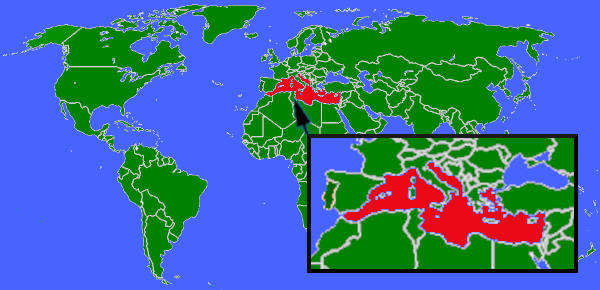
Circle the area on this map

A. Saint Paul is located at 44.9 degrees North, about the same as Venice, Italy. Baton Rouge is located at 30 degrees, about the same as Cairo, Egypt. Europe’s heat was expected to extend north this week, bringing record-breaking temperatures of more than 100 degrees to Great Britain. That North Atlantic island is farther north than every U.S. state except Alaska.
D. Warm water and moist air from the Gulf of Mexico flows north along our east coast as the Gulf Stream before turning eastward as the North Atlantic Current, which carries the warmth to the British Isles and Northern Europe. Those currents are part of the North Atlantic’s ocean gyre. That gyre is a circular current that heads to the east in the northern part of the ocean and to the west in the south.
D. European sailing ships used the circular winds of the North Atlantic to transport trade goods south to Africa to exchange for enslaved people who were taken west to the Americas. The captives were exchanged for crops like sugar, which were shipped back to Europe using the winds of the northern part of the gyre. The current still brings dust from the Africa’s Sahara Desert and hurricanes to American shores.
A. The continents of Africa and Europe are closest at the eight-mile-wide waters of the Strait of Gibraltar, which connects the Mediterranean Sea to the rest of the Atlantic Ocean. A bight is a concave bend or curvature in a coastline or river. An isthmus is a narrow strip of land that connects larger bodies of land, such as Panama. A tombolo is a sandy, beach-like isthmus.